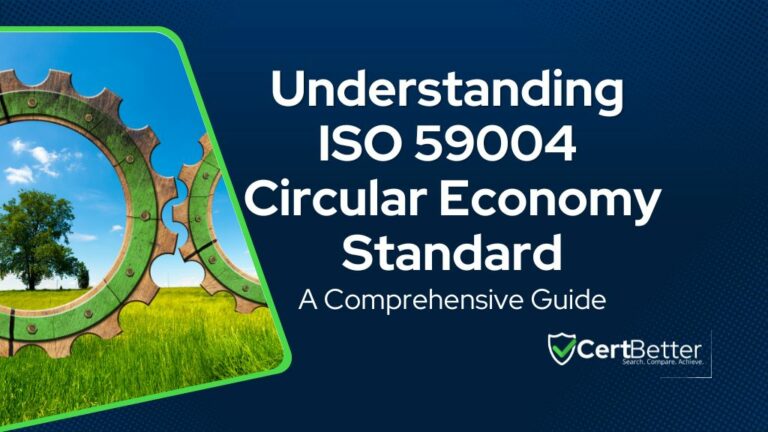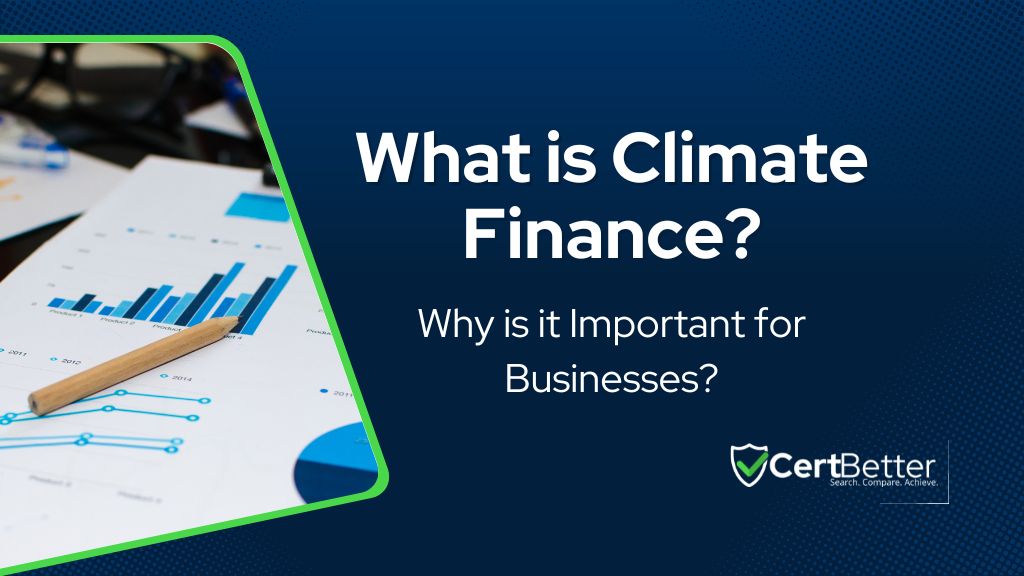Understanding ISO 59004 Circular Economy Standard

The global shift towards sustainability has become a pressing necessity as the traditional linear economic model, characterized by extraction, production, use, and disposal, leads to significant environmental challenges. To address these issues, the ISO 59000 family of standards, particularly ISO 59004, provides comprehensive guidance for organizations to transition to a circular economy. This article delves into the significance of ISO 59004, its detailed description, and its role in fostering a circular economy.
What is ISO 59004 Circular Economy Standard?
ISO 59004 is part of the ISO 59000 family of standards specifically designed to support the shift towards a circular economy.
This standard establishes a framework that includes defining key terms and concepts, outlining a vision for a circular economy, elucidating core principles, and offering practical guidance for actionable steps towards sustainability.
The aim is to help organizations contribute to the United Nations Agenda 2030 for Sustainable Development by facilitating a transition to a circular use of resources.
Where can I find the ISO 59004 Standard?
You can buy the ISO 59004 standard directly from the ISO Standards Store. This official source ensures you get the most accurate and up-to-date version of the standard.
Before making a purchase, it’s a good idea to look at sample pages to understand the content and structure of the standard. Have a look at the sample pages!

The Purpose of ISO 59000 Family of Standards
The ISO 59000 family of standards plays a crucial role in promoting sustainability globally. These standards provide a common understanding and a structured approach to implementing circular economy principles across different industries.
By standardizing definitions, principles, and practices, the ISO 59000 family helps organizations align their strategies with global sustainability goals, fostering more sustainable economic practices and enhancing environmental stewardship.
ISO 59004’s Role in Fostering a Circular Economy
ISO 59004 is pivotal in guiding organizations towards sustainable practices by emphasizing the importance of a circular economy.
Unlike the linear economy, the circular economy model promotes the sustainable management and renewal of natural resources.
ISO 59004 outlines the necessary steps and principles to transition from a linear to a circular economy, focusing on minimizing waste, maximizing resource efficiency, and fostering long-term environmental sustainability.
What Areas Covered by ISO 59004?
Detailed Description of ISO 59004
ISO 59004 provides comprehensive guidance applicable to any type of organization, regardless of its size, sector, or location.
The standard covers the entire lifecycle of products and services, promoting practices that extend the lifecycle of resources through reuse, recycling, and regeneration.
By adopting ISO 59004, organizations can integrate sustainable practices into their operations, contributing to broader environmental and economic goals.
Scope and Applicability to Various Types of Organizations
ISO 59004 is designed to be universally applicable, making it relevant for a wide range of organizations, including businesses, governmental bodies, and non-profit organizations.
Its principles and guidelines can be tailored to suit specific operational contexts, ensuring that all types of organizations can benefit from transitioning to a circular economy.
The flexibility and comprehensive nature of ISO 59004 make it a valuable tool for organizations worldwide.
Key Terms and Concepts Defined Within the Standard
One of the fundamental aspects of ISO 59004 is the establishment of a common vocabulary related to the circular economy.
Key terms such as “resource efficiency,” “life cycle assessment,” “reuse,” “recycling,” and “regeneration” are clearly defined to ensure consistent understanding and application.
This standardized terminology facilitates clear communication and collaboration among organizations, stakeholders, and regulatory bodies.
Vision and Core Principles of a Circular Economy
ISO 59004 outlines a vision for a circular economy that emphasizes sustainability, resource efficiency, and environmental stewardship. The core principles include:
- Resource Efficiency: Maximizing the use of resources throughout their lifecycle to reduce waste and environmental impact.
- Lifecycle Perspective: Considering the entire lifecycle of products and services, from design to disposal, to promote sustainable practices.
- Regeneration: Encouraging the regeneration of natural systems and resources to maintain ecological balance.
- Collaboration: Fostering cooperation among stakeholders, including businesses, governments, and communities, to achieve circular economy goals.
Top 05 Benefits of ISO 59004 for Organizations
The adoption of ISO 59004 brings a multitude of benefits to organizations, helping them transition to more sustainable and efficient practices. Below are some key advantages:
1. Delivering More Sustainable and Ambitious Solutions
ISO 59004 encourages organizations to rethink their operations and product life cycles, promoting sustainability from the ground up.
For example, a manufacturing company can redesign its products to use fewer materials and make them easier to disassemble and recycle at the end of their life. By doing so, they not only reduce waste but also create products that are more attractive to environmentally conscious consumers.
Such ambitious solutions position the company as a leader in sustainability, fostering innovation and opening new market opportunities.
2. Improving Relationships with Stakeholders
Adopting ISO 59004 can significantly enhance an organization’s relationships with its stakeholders. Transparency and commitment to sustainability build trust and credibility with customers, suppliers, and the community.
For instance, a food production company that implements sustainable sourcing and waste management practices can engage its supply chain partners in joint sustainability initiatives.
These collaborative efforts can strengthen business relationships, improve supply chain efficiency, and enhance brand loyalty among customers who value ethical practices.
3. Enhancing Voluntary and Legal Obligation Fulfillment
Compliance with environmental regulations is a critical aspect of any business operation. ISO 59004 provides a structured approach to meet and exceed these requirements.
For example, a chemical manufacturing plant can use ISO 59004 guidelines to manage its waste and emissions more effectively, ensuring compliance with local and international regulations.
Additionally, the standard helps organizations fulfill voluntary commitments, such as corporate social responsibility (CSR) goals, further enhancing their reputation and legal standing.
4. Contributing to Climate Change Mitigation and Adaptation
ISO 59004 supports organizations in their efforts to mitigate and adapt to climate change. By implementing circular economy principles, companies can reduce their carbon footprint and increase resource efficiency.
For example, a textile company can adopt recycling programs for old garments, reducing the need for virgin materials and lowering greenhouse gas emissions. These actions not only contribute to global climate goals but also prepare the company for future regulatory changes and market demands related to climate resilience.
If your company is already certified to other ISO standards with Climate Change updates, this means you may not need to make greater efforts.
5. Increasing Organizational Resilience
Resource scarcity and environmental risks pose significant challenges to modern businesses. ISO 59004 helps organizations develop strategies to mitigate these risks.
For instance, a technology company might implement a closed-loop system for electronic waste, recovering valuable materials from old devices for reuse in new products.
This approach reduces dependency on finite resources and protects the company from supply chain disruptions caused by resource shortages or environmental regulations.
How to Implement ISO 59004 Circular Economy Standard?
Implementing ISO 59004 requires a systematic approach. You can also find an ISO 59004 consultant on CertBetter. Here are some practical steps and best practices for integrating circular economy principles into organizational practices:
Integrate Circular Economy Principles into Practices
- Assessment and Planning: Conduct a thorough assessment of current practices and identify areas for improvement. Develop a detailed plan outlining the steps to integrate circular economy principles.
- Stakeholder Engagement: Involve key stakeholders, including employees, suppliers, and customers, in the planning and implementation process to ensure buy-in and collaboration.
- Training and Education: Provide training to employees at all levels to foster understanding and commitment to circular economy practices.
- Implementation: Start with pilot projects to test and refine new practices before scaling them up across the organization.
- Monitoring and Evaluation: Establish metrics and monitoring systems to track progress and make necessary adjustments.
Actionable Steps Towards Sustainability
- Design for Durability and Reusability: Develop products that are durable, easy to repair, and recyclable.
- Resource Efficiency: Optimize the use of resources throughout the product lifecycle, from sourcing to production to disposal.
- Waste Reduction: Implement waste reduction strategies, such as recycling and composting programs.
- Supply Chain Collaboration: Work closely with suppliers to ensure sustainable sourcing and production practices.
- Consumer Engagement: Educate consumers about sustainable practices and encourage the return or recycling of products at the end of their life cycle.
Sample Case Studies of Successful Implementation of ISO 59004
- Case Study 1: A beverage company successfully reduced its environmental footprint by implementing a returnable bottle program. By collecting and reusing bottles, the company cut down on waste and raw material usage, achieving significant cost savings and earning positive recognition from customers and stakeholders.
- Case Study 2: A furniture manufacturer adopted a modular design approach, allowing customers to easily replace or upgrade parts of their furniture. This strategy extended the product lifecycle, reduced waste, and attracted eco-conscious consumers, leading to increased sales and market share.
- Case Study 3: An electronics company created a take-back program for old devices, recovering valuable materials and components for new products. This closed-loop system reduced the company’s reliance on raw materials, decreased environmental impact, and strengthened customer loyalty through responsible recycling practices.
Conclusion
In essence, ISO 59004 offers a comprehensive framework for integrating circular economy principles into organizational practices, ultimately contributing to global sustainability efforts and supporting a more sustainable future for all.
Adopting ISO 59004 can transform organizations, making them more sustainable, resilient, and efficient. By following practical guidance and best practices, companies can not only meet regulatory requirements but also lead in the global transition to a circular economy.
By following practical guidance for implementation, such as conducting assessments, engaging stakeholders, providing training, and adopting best practices like designing for durability and promoting resource efficiency, organizations can successfully transition to a circular economy.
- Last updated: June 9, 2024
- CertBetter
Our community of compliance professionals and ISO experts is ready to provide you with insightful answers and practical solutions. Join the discussion now!
- Recommended Reads
- 33 reads
-
Frequently Asked Questions
Understanding ISO Terminology: Guide to Important Terms and Concepts
No posts found
ResetConnect with ISO Certification Consultants
CertBetter makes it easy to find ISO certification consultants and compliance professionals from around the globe.

